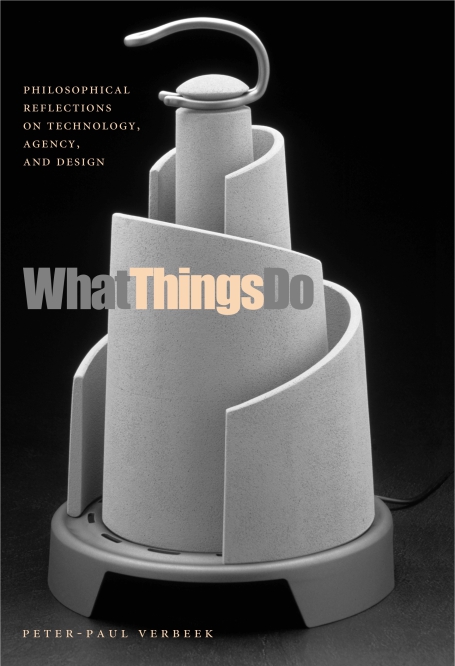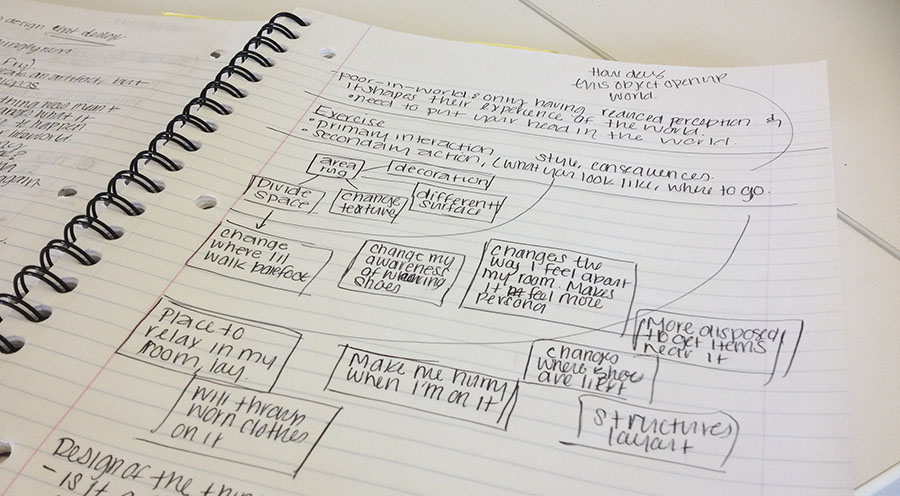Seminar, Week 7: Things That Mattter
“Things That Matter”
Peter-Paul Verbeek & Petran Kockelkoren
— —
First, an introduction: Seminar is one of my favorite classes. It’s very theory based and pushes me to think about design and design interaction in the context of philosophy, anthropology, and futurism. Our professor finally got fed up and insisted that none of us bring up marketing and productization anymore in his class. And in my head it was like a slow “yessssssssssssss” that fades out only after five real-time minutes. As he put it, we already know how to think in terms of products. He’s trying to get to think outside of products.
I think I want to try to use my entries about seminar as just a way to quickly regurgitate my thoughts on the week and attempt to organize them. And there are a lot of thoughts that need organizing. I’m sorry that you’re missing the first few weeks, but luckily we had an assignment to summarize four them so I’ll repost when I get them back.
— —
So this week we talked about how designers design design that designs; We complete a process to create an artifact but the artifact continues to designing.
He talked about Peter-Paul Verbeek’s background as a philosopher in the engineering department. (You have to say his full name every time you say it, by the way. I think Cameron enjoys the way it sounds). He comes from a society that believes that technology changes the environment and that the government has a role in assessing what technologies are approved by deciding whether the changes the technology is likely to cause are good or bad. He discussed artifacts as having politics in this way.
This lead to a discussion of “semiotics” versus “thingly interactions.”
Semiotics is the study of signs and meaning. I was excited about this part of the lecture because we talked about the same argument in my senior seminar during my English degree. It was the same excitement you feel when you’re a concert for a band you only kind of like and then all the sudden they play the one song you know really well and you feel like you can really participate in the action and bond with the crowd.
Semiotics comes from Saussurian philosophy that says that your understand of a world is dictated by language. You only know the world by the words you use to describe it. It segments the way you think and there for the way you see the world. The example we used in English class is that we in united states have to concept of mutton because we don’t have a word or eat it here. To us we don’t see it as sheep’s meat if we’re lucky, or just vaguely some kind of meat if we’re not. But in Europe where it’s more common, they see as distinct as as we see steak from cow’s meat. Steak is a think that we understand and interact with and we feel like it’s distinct from cow’s meat even if we know it’s the same thing. When we think of steak it brings about a whole ‘nother world apart from cows. Am I getting it right? I believe that was the argument.
If you were like me, your reaction was like “no, impossible! If I see a thing, it exist. It exists whether I have a word for it or not.” But then, inevitably we start describing it, don’t we? Maybe it’s kind of like color, we only know the worlds for certain colors and if we don’t know a special word for a color, say cerulean, then we never distinguish that color from blue in our mental view of the world. Our world is broken into “signs” and “signifiers.” If we don’t have signs for a signifier than that signifier doesn’t exist as a distinct object. Sign=”cerulean”, signifier= a bright blue color.
Anyway, interesting philosophy and because I love language so much I thought it was really lovely. Who knows if I explained it correctly. Who knows.
On the other side was the thingly interactions, as he described it. This was more of a material culture study. It believes that things are not a random convention that the thingliness is an inherent quality. It’s fundamental to the object. I really don’t have a strong understanding about what this was about. Perhaps I should ask him again.
That was the background, the paper itself was trying to find ways to make things matter at this fundamental level, not just create stories around the thing. It followed an organization in its attempts to extend the life or products and there for encourage sustainability through various methods:
- Shape & Structure of an object, making things age well.
- Connecting objects with services like repair and upgrades
- Using products as symbols and icons for a particular lifestyle.
What the authors found fault with was that they were focusing too much on change our psychological perspective of the object rather than working on how things thing. They were changing the sign of the object, how we consider it, they were not changing the thing itself and who it brings you value.
 (Peter-Paul) Verbeek used the arguments of two philosophers: Ihde & Borgmann to back up his philosophy. Borgmann especially was emphasizing real engagement and appreciation of itself so that it become a focal thing . He used this hearth to the right an example. It’s supposed to be this this beautiful object its own right that would bring people together and ask for their attention as they engage with their object. It’s made of ceramic plates that swirl around each other while it heats. Rather than central heating which makes heat a commodity.
(Peter-Paul) Verbeek used the arguments of two philosophers: Ihde & Borgmann to back up his philosophy. Borgmann especially was emphasizing real engagement and appreciation of itself so that it become a focal thing . He used this hearth to the right an example. It’s supposed to be this this beautiful object its own right that would bring people together and ask for their attention as they engage with their object. It’s made of ceramic plates that swirl around each other while it heats. Rather than central heating which makes heat a commodity.
Cameron made it seem like this last reading really connected all of our readings, and perhaps it did. We were at this point where we could see how objects matter in the way the interact with other object and change our interactions with the world. It goes beyond the specific function of the what the thing was meant to do, but changes what it does and what it allows to happen.
Cameron used the example of a microwave: What does the microwave do? It allows for faster eating. What does fast-eating do? It allows us to multi-task, to cook our food faster and leads us to buying more unhealthy food that can just be quickly stored, may cut down on family interactions and eating together, or, make it easier to stay in and be lonely.
Then we all completed this exercise in class which will eventually be a large project. I chose my area rug in my room because I realized I have a really distinct way I interact with it. I find the carpet in my room (and the house) really gross and so immediately bought an area rug as the first way to make my room my own. It’s the only place in my room where I feel like I can go barefoot, which I enjoy. but since it is in the middle of the room, sometimes I have to cross it in shoes in which case I feel really aware that I’m wearing shoes and guilty. So I’ll try to walk quicker or more daintily to minimize my time on the rug. it’s a safe space that really changes my interactions with the room. The picture of my sketch is above.
